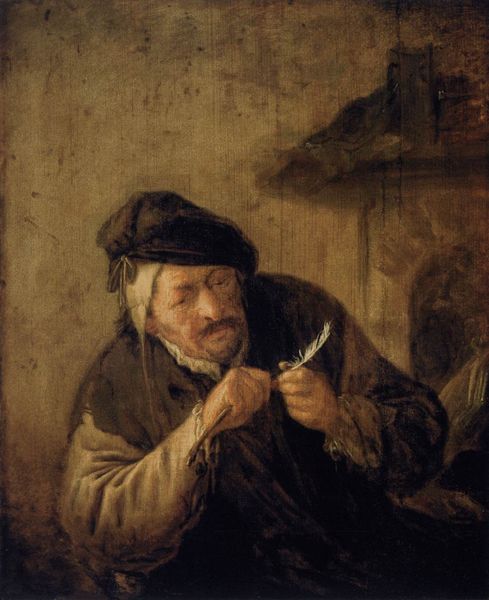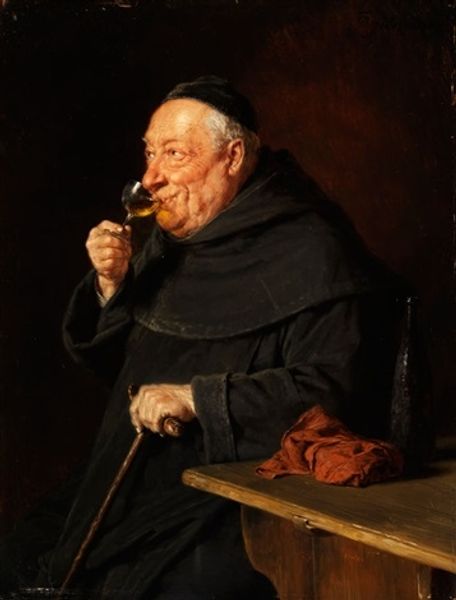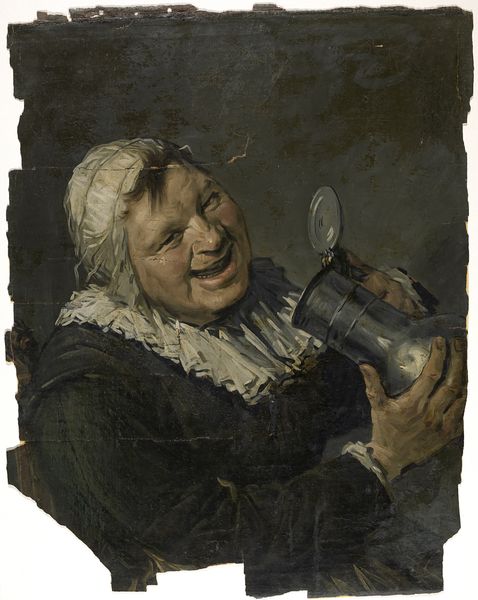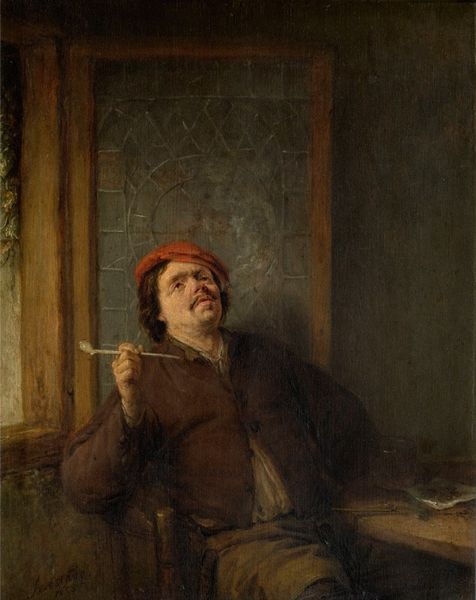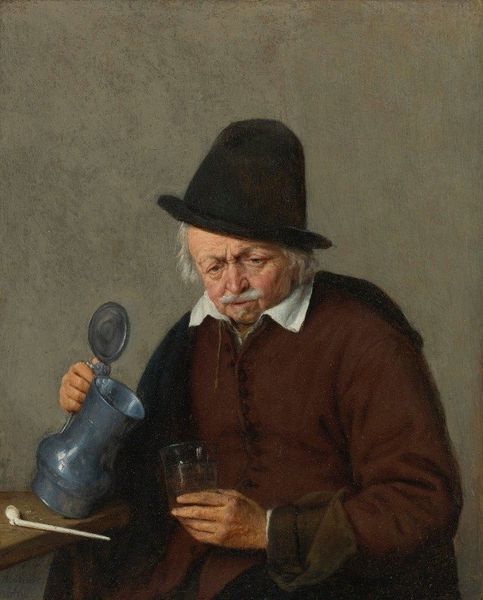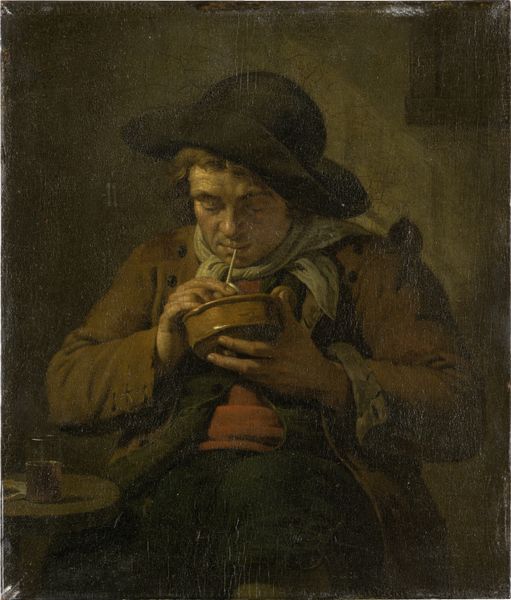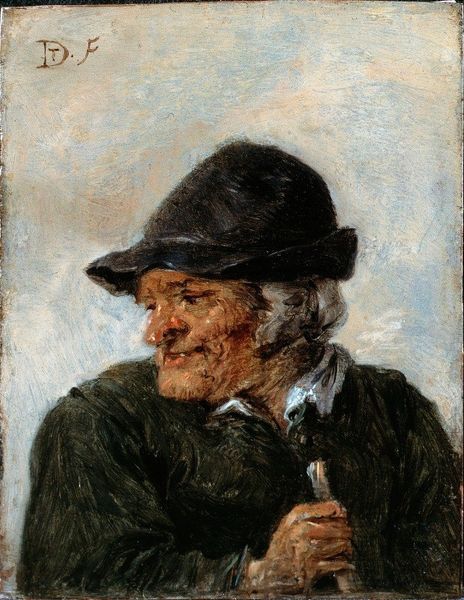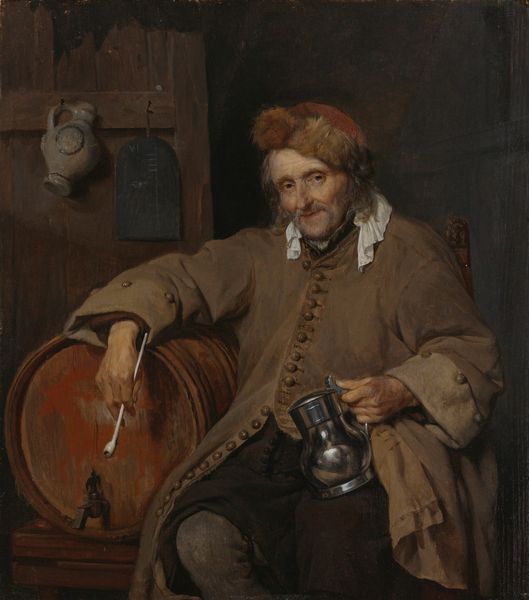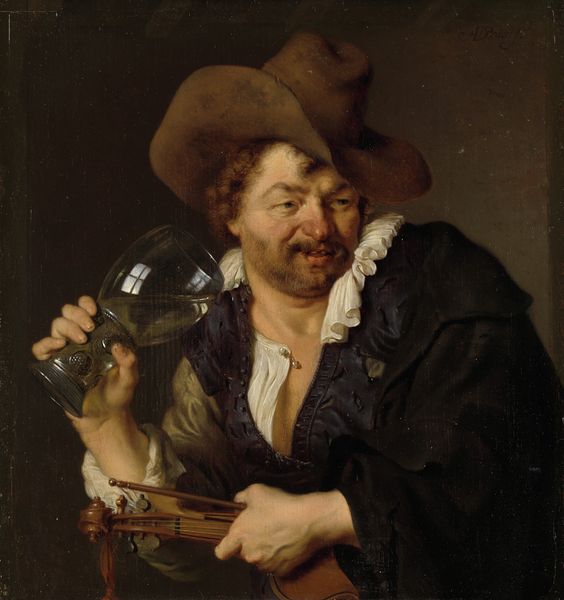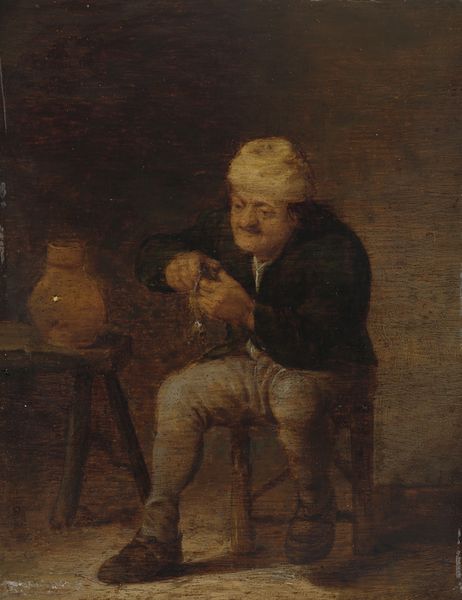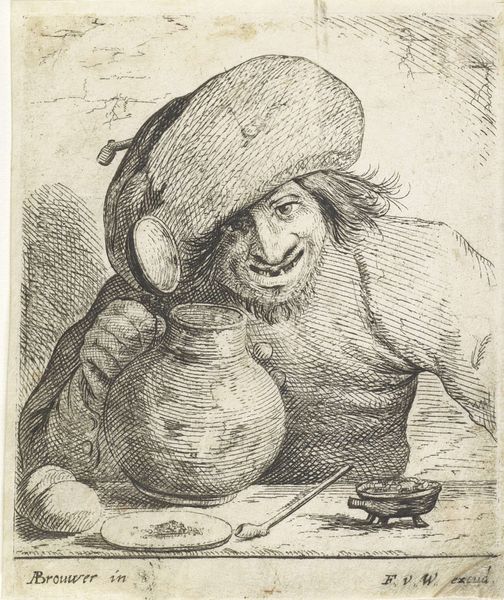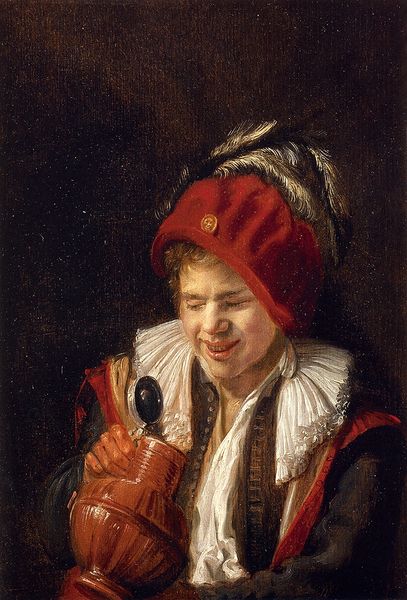
oil-paint
#
portrait
#
oil-paint
#
oil painting
#
genre-painting
#
academic-art
#
realism
Copyright: Public domain
Curator: Today, we're looking at Eduard von Grützner's "Falstaff," painted in 1906. A vivid depiction rendered with oil on canvas. Editor: My immediate impression is that of a jovial contentment. The subject exudes a rosy-cheeked mirth, seemingly cradling a large beer stein. There's a strong sense of weight to him and his vessel, an earthy substantiality. Curator: Indeed, and the character, Falstaff, comes from Shakespeare's plays. He represents indulgence, humor, and a disregard for societal expectations. Grützner was actually renowned for his interpretations of similar figures, often embodying comfortable, bourgeois men enjoying life's simpler pleasures. Editor: The making is interesting, I am focused on the jar; there are tactile values. This is emphasized through the thick brushstrokes, which catch the light in ways that emphasize its curved shape. He obviously chose oil paint as its the medium to portray his intention, for he might explore varied texture during the working process. Curator: Precisely. The materiality informs the message, doesn't it? And thinking about it intersectionally, his comfortable disposition and corpulence would certainly reflect on the privilege of his time. This comfort stands in stark contrast to the lives of many during the same period. Editor: And that’s where the social context gets critical, doesn't it? The accessibility of beer stein, the materials, how they come together to make a class of objects as an example? Curator: Exactly, thinking about how it becomes class marker during that time for certain groups and people; but more importantly what does it suggest about who has permission to be joyful, even transgressive? It really demands you wonder to question historical constructions and modern receptions. Editor: This really leads us to what we should focus while considering these types of genre and portraits! Considering the ways Grutzner skillfully crafts both an individual portrait, we can analyze historical perspectives together by comparing materialism to broader sociological insights and interpretations. Curator: I concur entirely! It offers us space to really consider the broader scope and cultural significance that it may represent, alongside to celebrate the artistry.
Comments
No comments
Be the first to comment and join the conversation on the ultimate creative platform.

